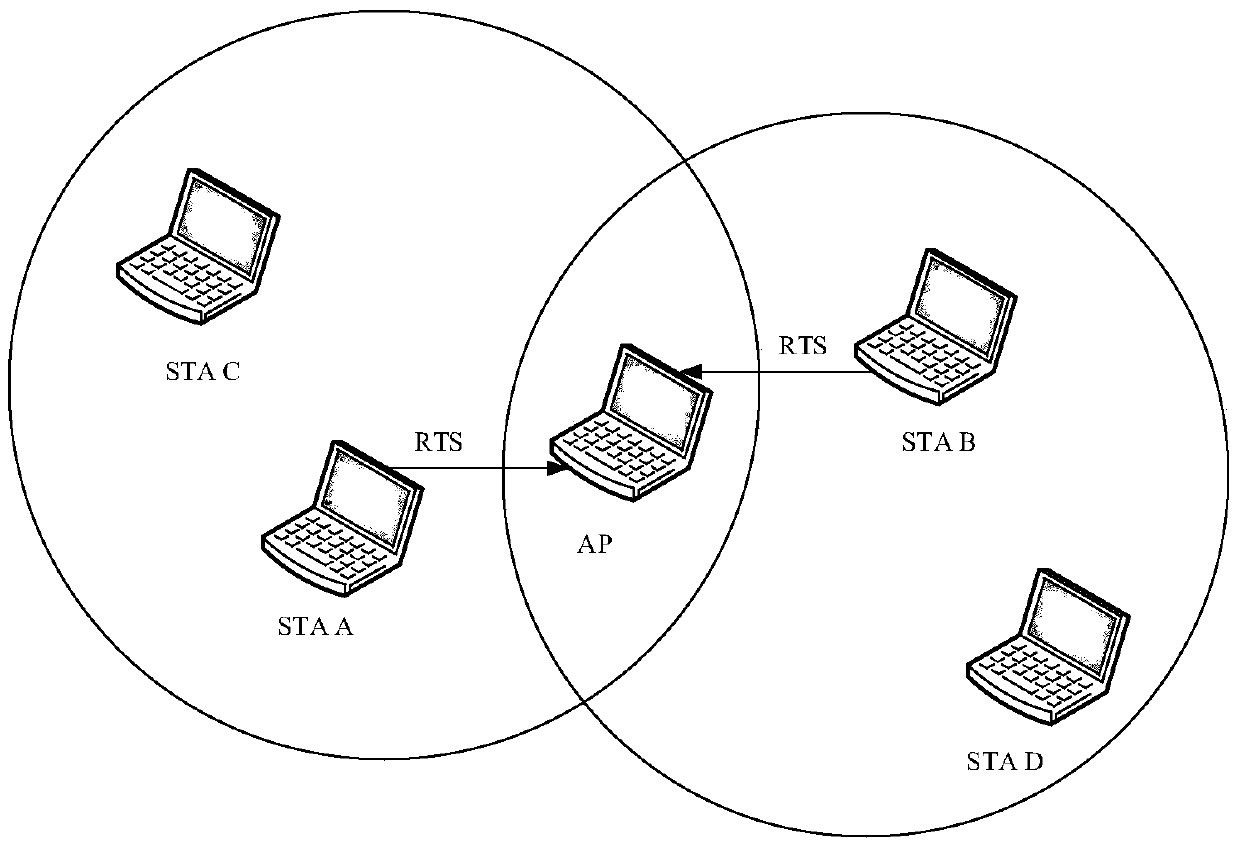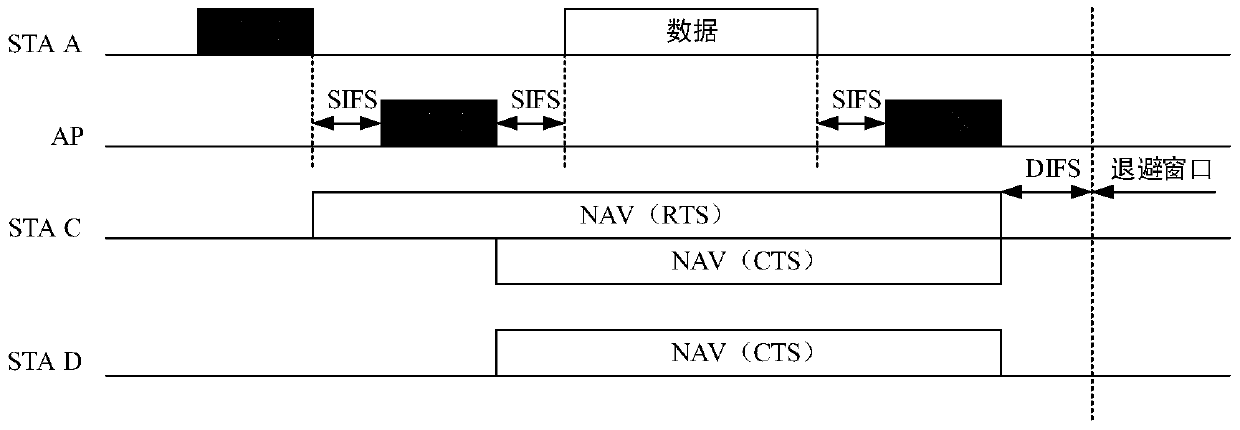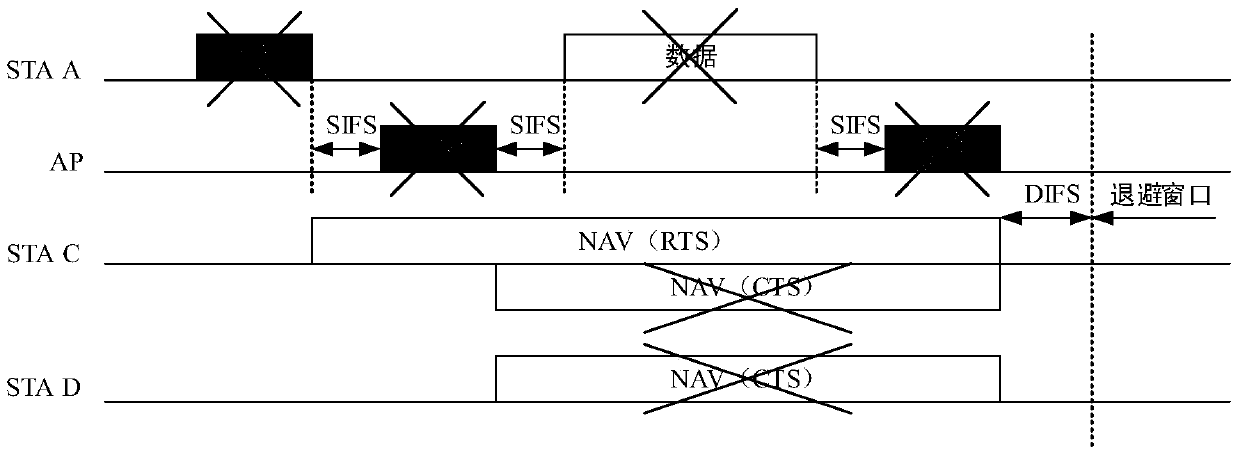A solution to rts collision based on fair competition
A fair competition and solution technology, applied in the field of wireless communication systems, can solve problems such as conflicts, achieve fair access channels, increase fairness index, and improve fairness problems
- Summary
- Abstract
- Description
- Claims
- Application Information
AI Technical Summary
Problems solved by technology
Method used
Image
Examples
Embodiment Construction
[0031] The present invention will be further explained below in combination with specific embodiments.
[0032] like Figure 5-7 As shown, a RTS collision resolution method based on fair competition includes the following steps:
[0033] Step 1, station A uses the RTS / CTS handshake mechanism to send RTS frames;
[0034] Step 2, the stations around station A set the NAV according to the "duration" field contained in the received RTS frame;
[0035] Step 3, if station A does not receive the CTS frame sent by the surrounding stations within the CTSTimeout time, it means that the CTS frame collides with the hidden node, and station A sends a CF-End frame at this time;
[0036] Step 4, the peripheral stations that have received the RTS frame sent by station A set their NAV to 0 after receiving the CF-End frame;
[0037] Step 5, the contention window of A is doubled, and A uses the two-step back-off contention access mechanism to compete for the channel; the two-step back-off con...
PUM
 Login to View More
Login to View More Abstract
Description
Claims
Application Information
 Login to View More
Login to View More - R&D
- Intellectual Property
- Life Sciences
- Materials
- Tech Scout
- Unparalleled Data Quality
- Higher Quality Content
- 60% Fewer Hallucinations
Browse by: Latest US Patents, China's latest patents, Technical Efficacy Thesaurus, Application Domain, Technology Topic, Popular Technical Reports.
© 2025 PatSnap. All rights reserved.Legal|Privacy policy|Modern Slavery Act Transparency Statement|Sitemap|About US| Contact US: help@patsnap.com



